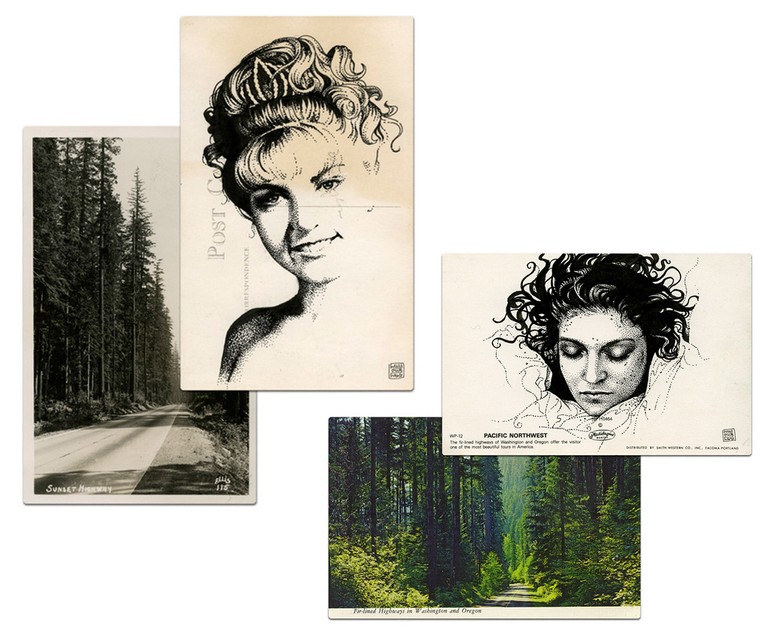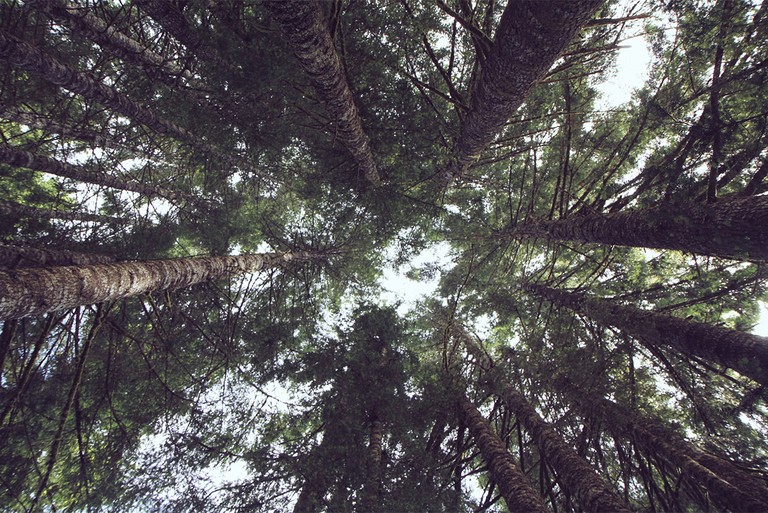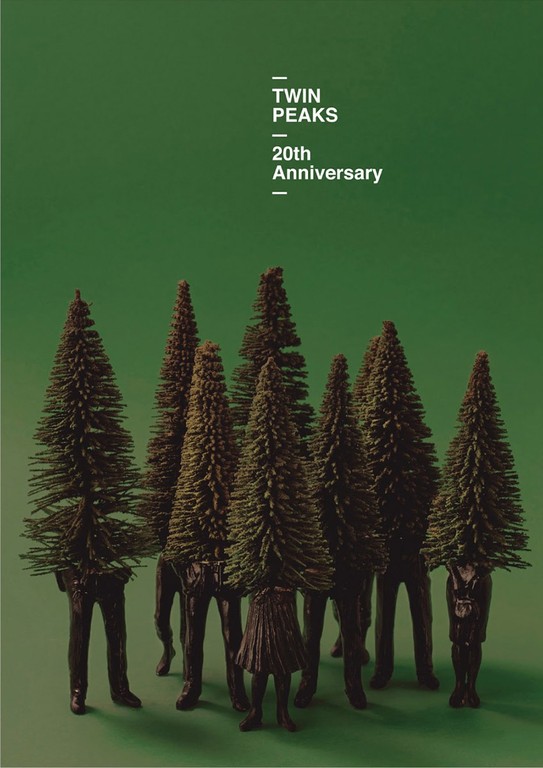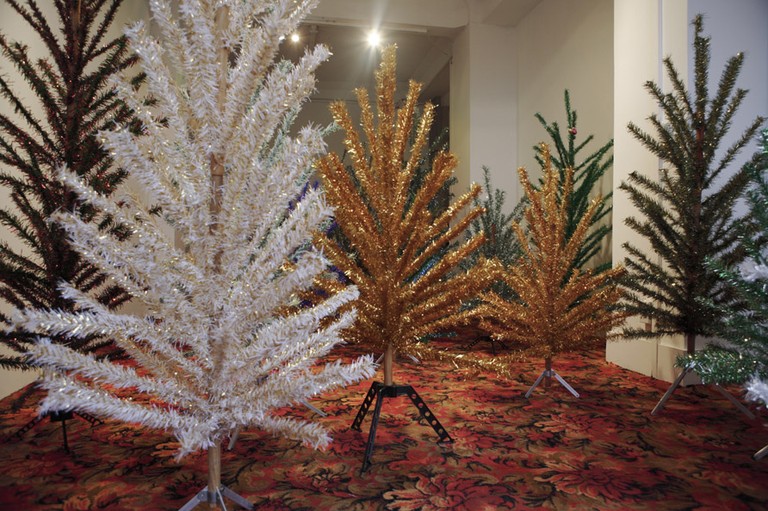The Occasional Journal
The Dendromaniac
March 2015
-
Editorial
Alice Tappenden, Ann Shelton, Jessica Hubbard -
For the trees
Rachel Buchanan -
dwelling trees, tree dwellings
Xin Cheng -
Axis Mundi: Long Live the Tree of Life
Prudence Gibson, Tessa Laird -
Forest satyagraha
Robyn Maree Pickens -
Garden City
Holly Best -
Accentuated Breath
Clare Hartley McLean -
On the portraiture of mushrooms
Creek Waddington -
Shade
Andrea Gardner -
bigwoods
Emil McAvoy -
Regan Gentry: Transformer and Master of Time
Sharon Taylor-Offord -
Colonisation versus conservation: a colonial view
Rebecca Rice -
Tae
Bridget Reweti -
The Framing of the Earth
Richard Shepherd -
Wildness in the Garden of Empire
Shaun Matthews -
In search of unknown vandals
Bronwyn Holloway-Smith, Thomasin Sleigh -
Bo.tan.i.cal: from the Greek
Jessica Hubbard -
The Tree as Traveller: Sakura in space, kōwhai in Chelsea, and the oldest pohutukawa in Spain
Emma Ng -
Seeing the wood and the trees: a complicating history of Hitler’s Oaks
Ann Shelton -
Conversations with Cripplewood
Cat Auburn -
Out of the Woods: The Return of Twin Peaks
Alice Tappenden, Matt Plummer -
The conceptual, the pastoral, and the plainly freakish (or, some of my favourite artworks are trees…)
Martin Patrick -
This is a femme slam.
Sian Torrington -
Explorations
Christian Nyampeta -
Works from the series An Ethnography on Gardening, 2006-2008
Raul Ortega Ayala -
Bent
Jonathan Kennett, Mary Macpherson -
One Shining Gum / Savia Brillante
Christina Barton, Maddie Leach, Zara Stanhope -
Acknowledgments
Alice Tappenden, Ann Shelton
Out of the Woods: The Return of Twin Peaks
Alice Tappenden, Matt Plummer
This article contains spoilers (but you won’t find out who killed Laura Palmer from us).
In my mind [Twin Peaks] was a place surrounded by woods. That’s important.1
David Lynch (Twin Peaks co-creator)
There’s a sort of evil out there. Something very, very strange in these old woods … A darkness, a presence.2
Harry S. Truman (Twin Peaks Sheriff/Bookhouse Boy)
I think the world should walk deep into the woods.3
Laura Palmer (murdered homecoming queen)
At 8:30am on October 3rd 2014, Twin Peaks co-creators David Lynch and Mark Frost simultaneously tweeted “That gum you like is going to come back in style!” While gibberish to the uninitiated, fans of the series immediately knew what it signalled: Laura Palmer’s promise to see us again in twenty-five years would be made good. Sure enough, soon after this typically cryptic heads-up US cable channel Showtime announced that nine new episodes of one of television’s most iconic shows will air in 2016, each written by Lynch/Frost, directed by Lynch, and shot on 35-mm celluloid.4 Little more has been revealed about the forthcoming third series other than Frost’s assurances that the plot will tell the “next chapter” of theTwin Peaks story, that it will be set in the present day, and most recently that Kyle MacLachlan will return to play Special Agent Dale Cooper.5 A quote from Showtime’s press release, however, seemingly confirms what many Peakies would’ve already suspected: trees will continue to play a central role in the show’s narrative and mythology. Lynch and Frost’s final sentiment? “The mysterious and special world of Twin Peaks is pulling us back. We’re very excited. May the forest be with you.”6
The pun may be a bit laboured, but it does more than just remind hardcore fans that Lynch was once asked to direct Star Wars VI: Return of the Jedi; it also highlights the prominent, mysterious, and apparently magnetic role trees play in Twin Peaks.7 From the Log Lady to the Bookhouse Boys (whose sigil consists of a sword superimposed over a pine); from the timber-dominated interiors to the frequent shots of wind blowing through Ghostwood National Forest, trees are everywhere (fittingly, the location for the town’s Sheriff’s station was originally a Lumberjacks’ office).8 Even more than the mountains which lend Twin Peaks its name, but which barely rate a mention in the series, trees are inextricably intertwined with the show’s identity and symbolism.
This is in part because trees are such apt markers of a duality that haunts Twin Peaks.9 Throughout the series we encounter deranged doppelgangers of beloved characters, maps that are clocks, owls that host spirits and dreams that solve murders. We see bikers as beatniks and jocks as drug dealers. Even the mismatched blue and red lenses in the glasses of batty psychiatrist Dr Jacoby are a carefully considered nod to this theme.10

Sam Howzit, 60 Days, http://bit.ly/1ADKME7, 2014. CC BY 2.0 https://creativecommons.org/licenses/by/2.0/
How do trees fit into the equation? Grounded in the earth while stretching for the heavens, these fluid signifiers are capable of evoking both the real and the supernatural. There’s good reason why Lynch, always weary of over-explaining, is quick to note the importance of woods in the show’s conception.11 On one level their presence anchors Twin Peaks in the particular environment of the North-Western United States, providing striking visual objects for the show’s directors, cinematographers, production designers and art department to experiment with. But, as the words of the normally unflappable Harry S. Truman remind us, trees are also the source of an unease that plagues the town, another hint that beneath a veneer of normality there is a deeper existential struggle going on.
Indeed, like Laura Palmer herself, the trees are full of secrets. Over the course of the series we’ll see a character’s soul become trapped in a wooden drawer knob; we’ll witness rampant capitalist Ben Horne enter a fugue state and return an evangelical environmentalist, ironically attempting to save the very forest which harbours the evil spirit BOB. We’ll learn that, in Laura’s own words, the woods knew her better than her boyfriend Bobby Briggs; and we’ll hear of a log witnessing her murder in the place where she was “often shaken and angry, threatened, paralyzed, unable to run.”12 Come to think of it, Lynch and Frost could just as easily have tweeted “See you in the trees” and roused the same excitement among their fanbase.13

Paul Willoughby, Laura Palmer, postcards, 2011. © Paul Willoughby
It’s unheard of for a show to be renewed twenty-five years after its initial airing, so perhaps the buzz generated by Lynch and Frost’s simultweet should come as no surprise. “That gum you like…” was sent to more than 2.3 million followers and subsequently retweeted over 17,000 times. While other shows have dated or simply faded into obscurity, Twin Peakscontinues to capture the imaginations of new and initiated viewers alike. A surprise hit for ABC during its initial run in 1990-1991, its unique brand of soap-opera surrealism has left an indelible mark in those intervening twenty-five years, broadening television’s tonal scope to include the wacky, weird and wild (often at the same time) and setting the scene for a new age of progressive programming most commonly associated with cable. It’s no coincidence that long before the advent of DVD box sets, Twin Peaks was available in a deluxe series of VHS tapes, the collective spines of which spell out the town’s name over—you guessed it—its majestic trees.14
Twin Peaks’ legacy has been further augmented by frequent reruns (it recently appeared in New Zealand on Sky’s Jones!channel), annual conventions, creative merchandise (you can buy everything from homeware to high fashion) and parodies by Scooby Doo, Sesame Street, The Simpsons and Saturday Night Live to name but a few.15 Its influence on the small screen can be measured not only in the proliferation of abstract aesthetics and quirky characters (Northern Exposure, The Sopranos, Six Feet Under, John From Cincinnati, Top of the Lake), but also in the deployment of a carefully developed mythology gradually revealed over the course of a series (Wild Palms, The X-files, Carnivàle, True Detective). In fact, across the globe projects of all manner cite it as inspiration.16 Clearly there is something special about Twin Peaks that keeps fans coming back time and again to scrutinise its mysteries for answers—often to find they’ve only dug up more questions. As David Bianculli notes:
Never before, in the history of television, had a program inspired so many millions of people to debate and analyze it deeply and excitedly for so prolonged a period … Twin Peaks generated the kinds of annotated scrutiny usually associated with scholarly journals and literary monographs …17
Although Bianculli uses the past tense here, there’s no sense in which critical interest in the series has abated.18 Those attempting to explain Twin Peaks’ enduring popularity commonly note its ability to develop a logically-consistent, if at times perplexing, universe—one in which the mythic and supernatural are set against fifty years of pop culture references, replete with nods to noir and subverted soap conventions. In other words, the key to the show’s success lies in its ability to transform the mundane into the mystifying; to suggest that beneath familiar surfaces lurks something unfathomable; and to create tonal shifts, ranging from subtle to violently abrupt, which pull us in and freak us out. It seems to us Twin Peaks offers an escape not just from, but into, the everyday.

Noël/onedeuxpunch, Douglas Firs, Oregon, http://bit.ly/1E4OFo5, 2013. CC BY-NC-ND 2.0 https://creativecommons.org/licenses/by-nc-nd/2.0/
Trees are naturals for this role. We see them all the time, feel like we know them; we rely on their leaves to tell seasons and in their trunk rings see time itself.19 But in an increasingly urban environment there also seems to be a collective anxiety about our relationship to nature. There’s something primal about trees that escapes our comprehension, something that we intuit but can’t fully articulate. They are inscrutable and arcane—a reminder, perhaps, that civilisation comes with the cost of lost knowledge. Just think of the phrase “out of the woods”, with all its connotations of danger and escape, and you get a feel for how these notions have snuck into popular consciousness. As Richard Martin notes:
From folktales to horror films, we have become accustomed to the idea that woods are magical and terrifying, that they provide a place where transformation or transgression can occur.20
Indeed, the symbolic importance of trees in both religion and folklore is well documented—the Garden of Eden, the Tree of Life and Knowledge, the legend of Tāne, and the fairytales of Hansel and Gretel and Red Riding Hood just some of the many examples that spring to mind. There’s nothing particularly novel, then, about what AV Club writer Keith Phipps calls Twin Peaks’ “woodsy-mystico mythology of good and evil,”21 or even the notion that trees can host both souls and secrets. But as Martin also points out: “One of Lynch’s defining features as an artist is his ability to make us feel the original power of a cliché.”22 And he’s right. Watch Twin Peaks, and a Douglas fir, ponderosa pine or sycamore will never be the same again.
It’s funny how what might be hackneyed or hokey in the hands of others becomes invigorating, even intoxicating, under the stewardship of Lynch and Frost.23 A shot of wind rustling through trees, for example, is hardly revolutionary. But when those trees belong to Ghostwood Forest, and when the image on screen is accompanied by evocative sound design and an alluring yet ominous score, the whole amounts to something other than the sum of its parts.24 The effect can be transportative. Peppered liberally throughout the series, so often these short ‘micro-scenes’ signal a change in setting and storyline is on the way, yet they are far more than conventional establishing shots. There’s something about these unnerving interludes that serves to keep us on edge—yet another reminder, perhaps, that lurking beneath the everyday surface is a supernatural force surely linked in some way to the murder which motivates the series’ events. It is in these ‘gaps’, these moments keyed to serve mood rather than narrative, that the heart and soul of Twin Peaks thumps.
Given its surreal tone and reliance on sound design and score to generate a particular mood, it might be argued that Twin Peaks is a frequency as much as a place, and taken further, that trees are antennas that allow others to tune in. The first time we meet the iconic (and more importantly, relatable) character of FBI Special Agent Dale Cooper, he’s driving through Washington State to the small logging town that has been recently traumatised by the death of ‘good girl’ Laura Palmer. Recording a message to his secretary, Diane, on his ever-present dictaphone, Cooper begins raving with a heightened boyish enthusiasm about the surrounding landscape: “I’ve never seen so many trees in my life … I got to find out what kind of trees these are, they’re really something”.25 Cooper’s first question for local Sheriff Harry S. Truman has nothing to do with the murder. Rather, he desperately wants to know what kind of “big, majestic” trees grow in the surrounding woods. Truman’s reply that that they are Douglas firs—the second-tallest conifer in the world, which can live for up to a millenia—is met with a slow intake of breath as Cooper repeats those magic words, Douglas firs.26 By attuning Cooper (and in effect the viewer) into the world of Twin Peaks, Lynch and Frost set us up for a transformation of sorts; when Cooper passes through trees from one world to another, it’s easy to be taken along for the ride. Later we will learn that a grove of twelve sycamore trees, named after the mythical burial site of King Arthur, is a portal to “another place”.27

It is at Glastonbury Grove that Cooper, having finally made sense of all manner of radio signals, chess moves and hieroglyphics, enters the mysterious Black Lodge in the series finale. The sycamores mark a place which is, in the show’s own vernacular, “between two worlds”.28 Tuning into this storyline is an appropriately named digital doppelganger: Glastonberry Grove.net. Just one of many devoted fansites that have sprung up over the years, it frames its detailed exploration of the Twin Peaks mythos almost entirely through trees—so the site’s various sections are marked by pixelated sycamores that turn a gloriously retro fluoro green when hovered over, its opening page reproduces the lyrics for Sycamore Trees in their entirety, and the season one transcripts are even available to view backgrounded by HTML-tiled tree patterns. Though not updated since 2006 (there’s a poignance in the fact that its call for the release of Fire Walk With Me lost scenes has since been met), its encyclopaedic details provided many of the primary sources for this essay.29
Four years after Glastonberry Grove’s last update, Twin Peaks-inspired art exhibitions—held in LA and London to mark the show’s 20th anniversary—also looked to the woods. One, “In the Trees”, included pieces by cast members Grace Zabriskie, Richard Beymer and Lynch himself, while works by Paul Willoughby and Javier Jaén shown in “Twin Peaks: 20th Anniversary Art Exhibition” (London: Menier Gallery) evoked both the show’s dualities—and the role of trees within them—with an enviable clarity. Willoughby’s series of illustrated postcards include two which depict Laura Palmer (alive in one, and dead in the next) on the flipsides of seemingly-tranquil forest scenes, reminding of us of her simultaneous attraction to, and weariness of, the woods. The nature of postcards means we can only ever see one side of the story at a time. The same is true for Laura of course, even if in her case two sides don’t begin to cover it. As the show unfolds, we get to know the residents of Twin Peaks through their relationship with this central character, and we discover soon enough that everyone sees a different side of her for a reason. Over the series’ run we’ll learn Laura Palmer was a cheerleader, drug dealer, caregiver, English tutor, prostitute, perfume counter girl, meals-on-wheels deliverer and confidante to recluses.

Javier Jaén, Twin Peaks 20th Anniversary, Digital Picture, 2012. © Javier Jaén
Of course the trees of Ghostwood—very much characters in their own right—must have their own unique view of Laura. In her diary we learn that “The woods needed to see me tonight” and that “no man ever … takes the time to think that trees might see what happens.”30 One man who has taken the time, though, is Javier Jaén. Tapping into this idea of trees as sentient witnesses, Jaén’s striking illustration of anthropomorphised pines sprouting from human bodies visually encapsulates so much of what this essay seeks to convey. Glastonberry Grove.net reminds us that trees have the capacity to hold or be inhabited by spirits. With no small dose of humour and surrealist panache, Jaén’s visual pun literalises this aspect of Twin Peaks mythology, presenting a kind of evolution in reverse while bringing to mind the work of Belgian painter René Magritte, who, like Lynch and Frost, “found a new potential inherent in things—their ability to gradually become something else.”31
Based in Barcelona, Jaén’s work highlights the series’ global reach, one which had already extended closer to home in Brenda Nightingale’s exhibition, Twin Peaks, held at Christchurch’s Physics Room in 2008.32 Borrowing more than its name from the television series, the show presented 80s-era faux Christmas trees on as garish a carpet as you’d care to imagine, reminding us of that other symbolic use trees are put to every December. A forest of tinsel, dowel and axminster, Nightingale’s show carefully wove together notions of nostalgia and ritual to create a poignant yet surprisingly unsettling gallery experience. For as Helen Calder notes:
These fake trees might symbolise once perceived domestic perfection … [but] countering that domesticity, or perhaps lurking underneath, is something more sinister. The densely packed trees with their narrow winding path recall childhood cautionary tales.33

Brenda Nightingale, Twin Peaks, Installation, The Physics Room Christchurch, 2008. © Brenda Nightingale
Strategically invoking the Lynch/Frost series to imbue her work with an element of gothic intrigue, Nightingale highlights how Twin Peaks has become an effective shorthand for the weird, wonderful and downright disarming—a common touchstone for to those seeking to mine the cautionary tale for dramatic gold. In what’s surely another testament to the show’s enduring popularity, it is a shorthand which still has currency nearly twenty-five years after the series’ initial air date.
For all manner of reasons, then, it’s hard resisting the temptation to describe Twin Peaks as a gum that’s never gone out of style (and as the Log Lady reminds us, what is gum but the lifeblood of a tree?).34 For many of us, it’s been a cultural presence for as long as we can remember. The show causes us to suspect something profound, and possibly terrifying, in every small town we pass through, in the natural environment we encounter everyday, and yes, even in chewing gum. Paul Willoughby has stated that ‘Twin Peaks was so strange and mesmerising… it made middle America look completely surreal’, and perhaps this ability to make a culture simultaneously recognise itself in a work of fiction and see itself in a new light as a result is one of the show’s most significant achievements.35
Juxtaposing the familiar with the strange, Lynch and Frost have in Twin Peaks created not just a fan phenomenon and cult classic, but a post-modern myth. In a little over a year the story will have another chapter, and television history another unique event courtesy of the Lynch/Frost double act. Among all the hype and anticipation, perhaps it’s Lynch’s daughter, Jennifer, who best sums up the logic behind Twin Peaks’ return: “Sometimes something creates such a potent echo, it must be spoken again.”36 But what surprises await in this next ‘speaking’? Will Cooper now be using a smartphone for his dates with Diane? Will Gordon Cole have better hearing aids? Will David Bowie return for a cameo as perplexing as it is fleeting? Amidst the speculation and uncertainty, one thing’s for sure: there, bearing silent witness over it all—and probably holding a fair few of those answers everyone’s been after—will be the trees of Ghostwood Forest. If only we, like the Log Lady, knew how to ask the right questions.
About the authors
Matt Plummer and Alice Tappenden are Wellington-based writers. They both hold MAs in Art History from Victoria University of Wellington and have written about New Zealand art in a range of contexts. Alice is Deputy Chairperson of the Enjoy Trust.
-
1.
David Lynch and Chris Rodley, “Suddenly My House Became a Tree of Sores”, in Lynch on Lynch revised edition, edited by Chris Rodley (New York, Faber and Faber, 2005), 162Twin Peaks. Episode 3/Rest in Pain, first broadcast 26 April 1990 by ABC. Directed by Tina Rathborne and written by Harley Peyton.
-
2.
Jennifer Lynch, The Secret Diary of Laura Palmer (New York: Simon and Schuster, Inc., 1990), 47.
-
3.
“Twin Peaks Revival to Air on Showtime in 2016” http://variety.com/2014/tv/news/twin-peaks-revival-to-air-on-showtime-in-2016-1201322329 (accessed February 15, 2015). Filling in the gaps between will be a Frost-penned novel, The Secret Lives of Twin Peaks, due late in 2015. http://welcometotwinpeaks.com/news/the-secret-lives-of-twin-peaks-novel-mark-frost/ (accessed February 16, 2015).
-
4.
“Kyle McLachlan returns to Twin Peaks as FBI Agent Dale Cooper” http://www.theguardian.com/tv-and-radio/2015/jan/13/kyle-maclachlan-returns-to-twin-peaks-as-fbi-agent-dale-cooper (accessed February 16, 2015).
-
5.
“Twin Peaks to return to TV in 2016” http://www.rollingstone.com/tv/news/twin-peaks-to-return-to-tv-in-2016-20141006 (accessed February 15, 2015).
-
6.
It’s also worth pointing out that the much anticipated opening episode of the show’s second season was titled “May the giant be with you.”
-
7.
“Episode 7/The Last Evening, with commentary by Richard Hoover,” Twin Peaks: The First Season Special Edition. Paramount, 2003. DVD.
-
8.
Even if they fail to make the cut on reddit’s feed devoted to duality in Twin Peaks: http://www.reddit.com/r/twinpeaks/comments/2gu7bk/duality_in_twin_peaks_spoilers/. See also http://cinemasights.com/?p=14077 (15 February 15, 2015).
-
9.
“Episode 7/The Last Evening, with commentary by Richard Hoover,” Twin Peaks: The First Season Special Edition. Paramount, 2003. DVD.
-
10.
Ghostwood Forest may well have been the first Twin Peaks character conceived by the show’s creators. According to Lynch “[The woods] were a character in my mind. Then other characters came to our minds.” Lynch and Rodley, Lynch on Lynch, 162.
-
11.
Jennifer Lynch. The Secret Diary of Laura Palmer, 100. Laura Palmer’s secret diary was penned by Lynch’s daughter Jennifer - who, in her own words, was the “third breathing human” to learn the identity of Laura Palmer’s killer (Twin Peaks: The Second Season. Paramount, 2007. DVD). Though set outside the series proper, The Secret Diary of Laura Palmer was published in the summer between the original broadcasts of seasons one and two, and has become an integral part of the show’s mythology. Related Twin Peaks publishing includes The Autobiography of F.B.I. Special Agent Dale Cooper: My Life, My Tapes (New York: Pocket Books, 1991), written by Frost’s brother Scott Frost.
-
12.
The phrase “see you in the trees” appears in the song Sycamore Trees, written by Lynch and composer Angelo Badalamenti, and dramatically performed by jazz singer Jimmy Scott in the series finale. Twin Peaks. Episode 29/Beyond Life and Death, first broadcast 10 June 1991 by ABC. Directed by David Lynch and written by Mark Frost, Harley Peyton and Robert Engels.
-
13.
An interesting overview of the chequered history of Twin Peaks on video can be found here: http://dugpa.com/features/a-history-of-twin-peaks-on-home-video/ (accessed March 8, 2015).
-
14.
See http://www.details.com/blogs/daily-details/2014/10/twin-peaks-parody.html, accessed 14 February 2015. And as Kyle McLachlan points out, the show has also undoubtedly benefited from the “beauty of binge television” where new viewers can watch several episodes in a row. https://www.youtube.com/watch?v=C_gIKJBhIjw, accessed 17 February 2015. See also Shara Lorea Clark, “Peaks and Pop Culture” in Fan Phenomena: Twin Peaks, edited by Marisa C. Hayes and Franck Boulègue (Bristol: Intellect Books, 2013): 8-15.
-
15.
See, for example, Vivid Project’s Between Two Worlds, which incorporated “set design, projections, dictaphones, optical illusions, forests, wallpaper, sound installations, things indoors that should be outdoors, scraping noises, and cinematic soundtracks, all loosely inspired by the TV show Twin Peaks.”http://www.hellocatfood.com/tag/twin-peaks/,. Accessed February 10, 2015
-
16.
David Bianculli, Teleliteracy: Taking Television Seriously (New York, Syracuse University Press, 2000), 271.
-
17.
Hayes and Boulègue, writing in 2013, note: “…demand for Twin Peaks-inspired scholarship, events, screenings and merchandise has only continued to grow worldwide.” “Introduction”, in Fan Phenomena: Twin Peaks: 5.
-
18.
As the Log Lady reminds us, “At the end of a crosscut log—many of you know this—there are rings. Each ring represents one year in the life of the tree. How long it takes to a grow a tree!” Twin Peaks. Episode 28/Miss Twin Peaks, first broadcast 10 June 1991 by ABC. Directed by Tim Hunter and written by Barry Pullman.
-
19.
Richard Martin, “It is Happening Again: Returning to Twin Peaks” Catalogue Essay for Twin Peaks: 20th Anniversary Art Exhibition, Menier Gallery, London, 2012. Martin’s succinct but excellent account of trees in Twin Peaks sets the bar high, but we figured if you can’t beat them, quote them.http://www.twinpeaks20london.co.uk/images/essay/catalogue-essay.pdf (accessed February 16, 2015).
-
20.
Keith Phipps, “Twin Peaks: Episode 15/Episode 16”. http://www.avclub.com/tvclub/twin-peaks-episode-15-episode-16-12807 (accessed February 15, 2015).
-
21.
Martin, “It is Happening Again: Returning to Twin Peaks”.
-
22.
It’s a common complaint, however, that the show’s quality lapsed in the latter half of its second season, a decline which has been attributed to Lynch’s attention being diverted to Wild at Heart at this time. Having all nine episodes of the forthcoming season directed by Lynch is a salivating prospect for any Twin Peaks fan.
-
23.
Production Designer Richard Hoover makes an intriguing link between the importance of wood to the show and the tradition of Gestalt psychology. “Episode 7/The Last Evening, with commentary by Richard Hoover.” Twin Peaks: The First Season Special Edition. Paramount, 2003. DVD. The woods were the key inspiration for Angelo Badalementi’s haunting theme for Laura Palmer, which doubles as the Love Theme for Twin Peaks – see https://www.youtube.com/watch?v=rgXLEM8MhJo
-
24.
Twin Peaks. Episode 1/Pilot/Northwest Passage, first broadcast 8 April 1990 by ABC. Directed by David Lynch and written by Mark Frost and David Lynch. The viewer never meets the mysterious “Diane”, and though she is presumed to be Cooper’s secretary, some commentators have speculated that perhaps Diane isn’t real at all. See, for example, Keith Phipps, “Twin Peaks: Pilot”, http://www.avclub.com/tvclub/twin-peaks-pilot-17022 (accessed February 17, 2015).
-
25.
“Douglas fir”, http://en.wikipedia.org/wiki/Douglas_fir, accessed 4 January 2014. Coincidentally, in New Zealand Douglas fir is the preferred timber tree in districts that are too cold for growing radiata pine, having been grown on high country farms since 1859. “Douglas Firs in the High Country”,http://www.teara.govt.nz/en/photograph/19700/douglas-firs-in-the-high-country (accessed January 4, 2014).
-
26.
Trees play a similar role to the ear found by Jeffrey Beaumont in Blue Velvet (1986), which in Lynch’s words is “an opening to another world.” Mysteries of Love, directed by Jeffrey Schwarz. Automat Pictures: 2002.
-
27.
According to the site’s administrators, GlastonberryGrove.Net is currently being redesigned to celebrate the return of Twin Peaks; a fact we discovered just a week before publishing. Get in quick.
-
28.
First mentioned in Episode 2/Zen, or the Skill to Catch a Killer, first broadcast 19 April 1990 by ABC. Directed by David Lynch and written by Mark Frost and David Lynch.
-
29.
Jennifer Lynch. The Secret Diary of Laura Palmer, 102 and 47.
-
30.
Rene Magritte, quoted in Jacques Meuris, Magritte (Koln: Taschen, 1994), 51.
-
31.
Further examples of Twin Peaks’ reception in New Zealand include TV3’s marketing campaign for the initial airing of the series in New Zealand, which featured mannequins wrapped in plastic placed on billboards and caused quite a stir—there’s even a google group devoted to it:https://groups.google.com/forum/#!topic/alt.tv.twin-peaks/ZDfVnfya4dM. See also: http://www.95bfm.co.nz/default,210166,ricky-strattons-cult-tv-flashback-twin-peaks.sm, (both accessed February 18, 2015).
-
32.
Helen Calder, “Catalogue essay” in Brenda Nightingale, Twin Peaks (Christchurch: The Physics Room, 2008): unpaginated. In a neat coincidence,Nightingale is also the title of one of the songs created for the series, written by Lynch and Angelo Badalamenti, and performed by Julie Cruise. It appears on Floating into the Night which was recently reissued on vinyl: http://www.factmag.com/2014/11/10/julee-cruises-angelo-badalamenti-and-david-lynch-produced-floating-into-the-night-reissued-on-vinyl/ (accessed February 18, 2015).
-
33.
In her introduction to the highly-anticipated premiere of the show’s second season, the Log Lady notes: “I chew pitch gum. On the outside, let’s say of the ponderosa pine, sometimes pitch oozes out. Runny pitch is no good to chew. Hard, brittle pitch is no good. But in between there exists a firm, slightly crusted pitch with such a flavor. This is the pitch I chew.” Twin Peaks. Episode 8/May the Giant Be With You, first broadcast 30 September 1990 by ABC. Directed by David Lynch and written by Mark Frost and David Lynch.
-
34.
http://www.theguardian.com/artanddesign/gallery/2014/jun/22/twin-peaks-postcards-in-pictures (accessed February 18, 2015).
